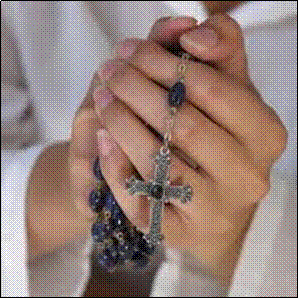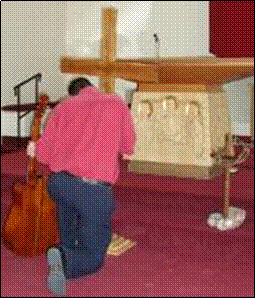

|
Page 6 |
|
Volume 3 issue Spring 2012 |
|
400 West Sunset, El Paso Texas 79912 (915)584-3461 |

|
Beginning with the account of creation, readers learn of the covenants (oaths of fidelity) underlying the progressive growth of god’s people from “one holy couple” – Adam and Eve, to “one holy family” with Noah, “one holy tribe with the descendants of Abraham, “one holy nation” under Moses”, “one holy Kingdom” following the line of David and finally evolving into “one holy catholic and apostolic church” of today. In order to help readers understand events, how they are related to Jewish history and the rise and fall of other ruling nations, the authors have divided the narrative into 12 periods: The Early World - creation to 2000 BC - Great Pyramids of Egypt, Patriarchs – 2000 to 1700 BC.- Stonehenge begun, Egypt and the Exodus – 1700 to 1300 BC – First Urban civilization in China, Desert Wanderings 1280 to 1240 BC – Pharaohs of Egypt, Conquest and Judges: 1240 to 1050 BC - Fall of Jericho, Royal Kingdom 1050 – 930 BC, - building of the Temple in Jerusalem, Divided Kingdom. 930 – 722 BC, - First Olympics, building of Rome, Exile 722 BC to 538 BC – “Iliad” and the “Odyssey”, Hanging gardens of Babylon, Return 538 – 200 B. c. Greek rule, Great Wall of China, Maccabean Revolt 167 BC to 0 – Julius and Augustus Ceasers – Pax Romana ,The Church - 33 AD to present. |
|
In addition to in depth explanations of the major biblical stories, the writers have also included educational trivia. For instance, throughout biblical writings the number 40 is used to symbolize a time of trial and testing. The Tower of Babel was most likely a ziggurat, a pyramid like structure dedicated to the worship of pagan gods. We are told that Abraham’s journey began in the land of Ur, (later Babylon and Assyria) the region to which the Israelites would later return as exiles and of god’s three-fold promise to him of land, kingdom and worldwide blessing which will be fulfilled in later covenants. Priestly line begins with Melchizedek (king of Salem) which later becomes Jerusalem. God orders circumcision as a continuing sign of covenant. We note that passing through the Red Sea remains symbolic of our being saved from sin and that refraining from work on Sunday is our reminder of the Hebrews being freed from slavery in Egypt. Even with the memory of god’s blessings in the desert fresh in their minds, the Israelites built idols like the golden calf reminding us that today worship of idols such as money and power continue to keep us from entering the Promised Land. |
|
God instructs the Israelites to remain faithful and to teach these lessons to their children. We are commanded to do the same today. With the anointing of David as king, god promises never to abandon his people and that this royal line would continue unbroken until the coming of the Messiah. Interpreting Daniel’s dream of the four beasts, we come to understand that beasts and monsters most frequently represented conquering pagan nations such as Assyria, Babylon, Persia, Greece and Rome. Also, if you have ever wondered why the Israelites looked down on Samaritans with such distaste, this relates to the fact that Samaria was the capitol of the Northern Kingdom. When the north fell, the Assyrians took these people into exile (10 lost tribes of Israel) later repopulating the area with five pagan tribes. Remnant Jews then intermarried with these pagans and from that point on, Samaritans were considered unclean by their brethren in the South. God instructs the Israelites to remain faithful and to teach these lessons to their children. We are commanded to do the same today. With the anointing of David as king, god promises never to abandon his people and that this royal line would continue unbroken until the coming of the Messiah. Interpreting Daniel’s dream of the four beasts, we come to understand that beasts and monsters most frequently represented conquering pagan nations such as Assyria, Babylon, Persia, Greece and Rome. Continued on page 7 |
|
Thou shall not become bogged down by frustration, for 90% is rooted in self pity and will only interfere with positive action. |
